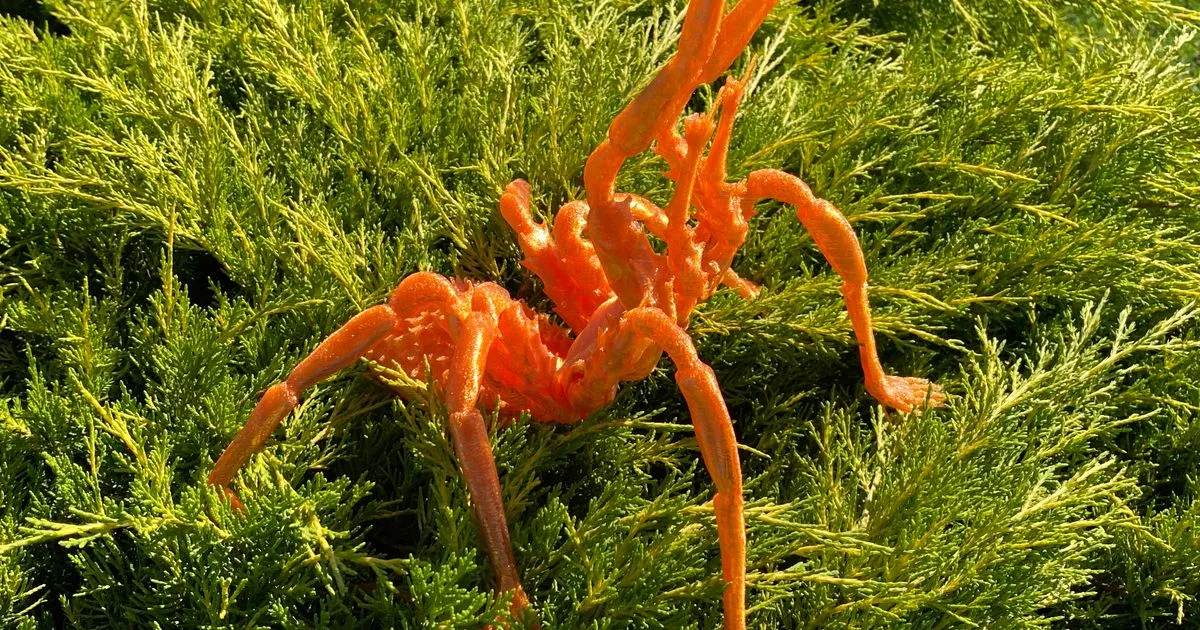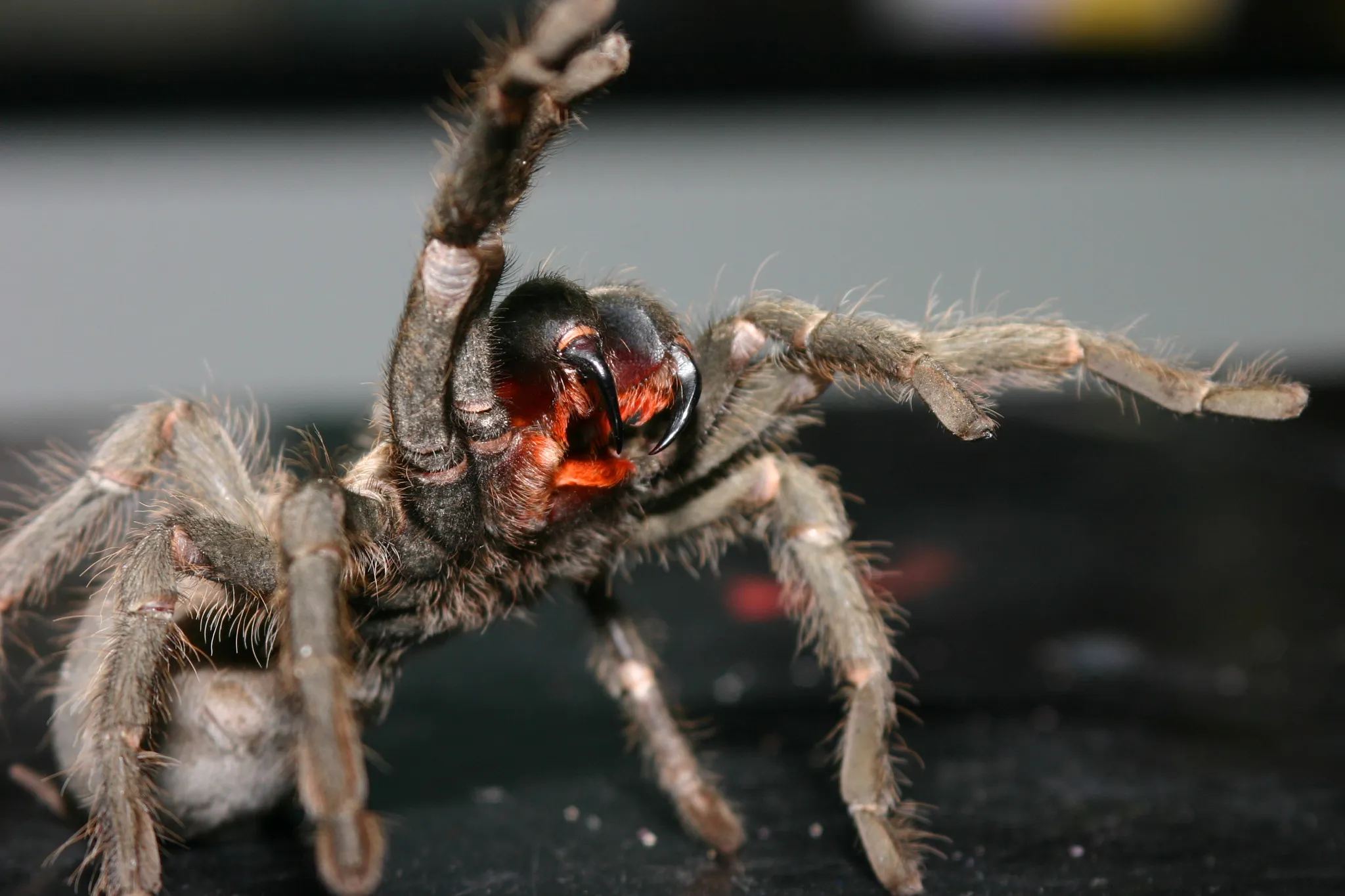Angry Tarantula Behavior [Top 5 Reasons]
Tarantulas, despite their sometimes intimidating appearance, are fascinating creatures. Understanding their behavior, especially when they display signs of anger, is crucial for responsible pet ownership and for anyone interested in these amazing arachnids. Knowing the triggers behind an angry tarantula helps you create a safer and more enriching environment for your eight-legged friend, and it also improves your interactions. This article delves into the top 5 reasons why a tarantula might exhibit angry behavior, from territorial disputes to environmental stressors, providing insights into their world and how to best care for them.
Territorial Defense
One of the primary reasons a tarantula might appear angry is due to its innate territorial behavior. Tarantulas are solitary creatures by nature, and they generally prefer to live alone. When another animal, or even a perceived threat, enters their personal space, they will often react defensively. This territoriality is a fundamental aspect of their survival strategy, designed to protect them from predators and other tarantulas. The display of aggression, such as a threatening posture or striking, is their way of communicating ‘stay away’. It’s important to understand that this behavior is a natural instinct, not necessarily a sign of malice or dislike. It’s the tarantula’s way of safeguarding its home and resources.
Threat Displays

When a tarantula feels threatened within its territory, it will often engage in a series of threat displays before resorting to more aggressive actions. These displays are designed to scare off the perceived threat without the need for physical confrontation, if possible. A common threat display involves rearing up on its hind legs, exposing its fangs, and sometimes, rubbing its legs together to create a hissing sound. The tarantula is trying to make itself look as large and intimidating as possible. Some tarantulas also have urticating hairs that they can flick off their abdomen as a further deterrent. Recognizing these threat displays and respecting the tarantula’s space is crucial to avoid escalating the situation and triggering a defensive strike. The tarantula is communicating its discomfort, and it is essential to heed these warnings.
Molt-Related Aggression
Molting is a natural and essential process for tarantulas, allowing them to grow and replace damaged body parts. However, it’s a vulnerable time, and during this period, tarantulas often become more defensive and prone to anger. Before molting, they may stop eating, become reclusive, and appear agitated. They are preparing to shed their exoskeleton and are in a weakened state. Any disturbance during this time can trigger an aggressive response. The tarantula’s priorities are to remain undisturbed and protected. It is wise to leave your tarantula alone during this period. Providing a stable and stress-free environment helps the tarantula molt successfully and without incident. Reducing vibrations and avoiding sudden movements are crucial steps to take during this process.
Pain or Injury
Like any living creature, tarantulas can experience pain or injury, and this can lead to increased aggression. If a tarantula is injured, it will naturally become defensive to protect itself from further harm. A sudden change in behavior, such as excessive irritability or a refusal to eat, could indicate a physical problem. Inspecting the tarantula for signs of injury is crucial if you notice a change in behavior. Look for any visible wounds, swelling, or unusual postures. Addressing any underlying health issues is essential. If you suspect your tarantula is hurt, consult a vet. Proper care and prompt treatment are critical for ensuring its comfort and recovery. A healthy tarantula is less likely to display angry behavior.
Environmental Factors

Environmental factors play a significant role in a tarantula’s mood and behavior. Both temperature and humidity, as well as the availability of suitable hiding places, greatly influence their comfort and well-being. Maintaining the correct environmental conditions is crucial for preventing undue stress, which can manifest as aggression. Creating an environment similar to their natural habitat is vital to prevent undue stress and keep them in a calm state. If their needs are not met, it can trigger a defensive reaction. Carefully monitoring and managing the environmental factors within the enclosure is vital for keeping your tarantula happy and healthy.
Temperature and Humidity
Tarantulas are ectothermic, meaning they rely on their environment to regulate their body temperature. Maintaining the proper temperature and humidity levels is essential for their health and well-being. If the temperature is too high or too low, or if the humidity is off, it can cause stress. When their enclosure is not correctly set up, they may become irritable and exhibit signs of anger. A thermometer and hygrometer are essential tools for monitoring the environment and making necessary adjustments. Providing a suitable temperature gradient and maintaining the correct humidity level, based on the species’ needs, is critical to reduce stress and promote a calm tarantula.
Inadequate Hiding Spots
Tarantulas are naturally secretive creatures that thrive in environments where they can retreat and feel secure. Providing adequate hiding spots is a fundamental aspect of tarantula care. If a tarantula does not have a safe place to retreat, it may feel exposed and vulnerable, leading to increased stress and defensive behavior. Inadequate hiding spots may cause the tarantula to display aggressive behaviors. Offering a variety of hiding options, such as cork bark, artificial plants, or pre-made hides, allows the tarantula to feel secure and less likely to become agitated. Ensuring the enclosure includes a safe place to hide is vital for your tarantula’s psychological well-being and it reduces the likelihood of aggressive behaviors.
Handling and Interaction

While tarantulas are fascinating creatures, it’s essential to understand that handling them is generally not recommended, especially for beginners. These animals are not typically friendly and may become agitated when held. Overhandling can lead to stress and potentially increase the likelihood of being bitten. Handling should only be considered if it’s absolutely necessary, such as for a vet check or enclosure maintenance. Even with experienced keepers, caution is advised. Prioritizing the tarantula’s well-being and minimizing any unnecessary interactions is key to a positive experience for both you and your pet.
Proper Handling Techniques
If handling is necessary, it is imperative to use proper techniques to minimize the risk of bites and prevent stressing the tarantula. The tarantula’s safety and your own should be your priority. Approach the tarantula slowly and gently, and never try to grab it. It’s recommended that you use a soft brush to gently guide it. Avoid any sudden movements. When handling, keep your hands close to the ground to prevent injury if the tarantula falls. Also, make sure to never restrain it, as this can cause it to become more agitated. Being patient and calm is key. After handling, wash your hands thoroughly, and observe the tarantula’s behavior for any signs of stress. The tarantula’s reaction gives you an indication about how it perceived the interaction.
Recognizing Stress Signals
Being able to recognize the signs of stress in your tarantula is crucial for its well-being and your safety. If a tarantula is stressed, it will likely display several behaviors, including flicking urticating hairs, a defensive posture, or hiding excessively. It may also refuse to eat or become more reclusive. If you notice these signs, it’s best to leave the tarantula alone and make adjustments to its enclosure or care routine. Remember, a stressed tarantula is more likely to bite or engage in other defensive behaviors. Regular observation and an understanding of their natural behaviors are key to providing appropriate care and minimizing stress.
Creating a Safe Habitat

Creating a safe and enriching habitat is fundamental to the health and happiness of your tarantula. The enclosure, or terrarium, needs to be suitable for the tarantula’s specific needs, including size, substrate, temperature, humidity, and hiding places. Providing a properly designed and maintained habitat is not just about aesthetics. It is crucial for the tarantula’s physical and psychological well-being. A well-designed enclosure will mimic their natural environment. Understanding the specific needs of the species is key to providing a comfortable and safe living space, which will in turn reduce stress and the likelihood of your tarantula displaying angry behavior.
Enclosure Size and Furnishings
The size of the enclosure is vital. It should be large enough for the tarantula to move around comfortably. It should allow for the addition of appropriate furnishings. An enclosure that is too small can cause stress and frustration, leading to aggressive behavior. The furnishing should provide opportunities for enrichment and security. Adding the right substrate, such as coconut fiber or peat moss, helps maintain humidity. Ensure there is a water dish, and include a hide or a place for the tarantula to retreat to. By providing a spacious and well-furnished environment, you encourage natural behaviors and reduce stress, creating a happier and more relaxed tarantula.
Feeding Habits
Feeding habits also play a crucial role in tarantula behavior. They may get angry if they are not fed a proper diet or if they are overfed. Establishing a regular feeding schedule and providing an appropriate diet are both critical aspects of tarantula care. Overfeeding can cause health problems. Understanding their dietary needs is key to managing their behavior. They should be fed a diet of appropriately sized insects. It is best to remove any uneaten food after a certain amount of time. Adjusting your feeding practices can go a long way towards preventing aggression. A well-fed tarantula is a happy tarantula.
Dietary Needs

Tarantulas are insectivores, and their diet should consist primarily of live insects. The size of the insects should be appropriate for the tarantula’s size. Providing a variety of insects, such as crickets, mealworms, or roaches, can help ensure they receive all the necessary nutrients. It’s important to remove any uneaten insects. These insects can stress the tarantula. They can also pose a risk if the tarantula is in pre-molt. Ensure that the insects you feed are gut-loaded. Providing the right nutrition is essential for their health and behavior. Poor nutrition can lead to stress and frustration. It could potentially make them more likely to display angry behavior.
Overfeeding
While underfeeding can cause stress, overfeeding can also have negative consequences. Overfeeding can lead to obesity and other health problems, which can cause the tarantula to become sluggish and irritable. Feeding a tarantula too frequently or giving it meals that are too large can lead to similar issues. Establishing a feeding schedule that aligns with the tarantula’s age and species is key. Adjust the feeding frequency accordingly. Regular observation of the tarantula’s abdomen is crucial. A tarantula that is overfed may exhibit less activity and could even appear more agitated than usual. Avoid overfeeding as it can have a detrimental effect on their health and demeanor.
In conclusion, understanding the reasons behind an angry tarantula’s behavior is essential for responsible pet ownership and for anyone interested in these fascinating creatures. By recognizing the top 5 reasons for this behavior, and making sure that you take steps to offer the right environment, including territorial issues, molting, pain, and environmental factors, you can minimize the stress and enhance the well-being of your tarantula. Always prioritize the animal’s safety and respect its space. With proper knowledge and care, you can create a harmonious environment that will allow your tarantula to thrive.
